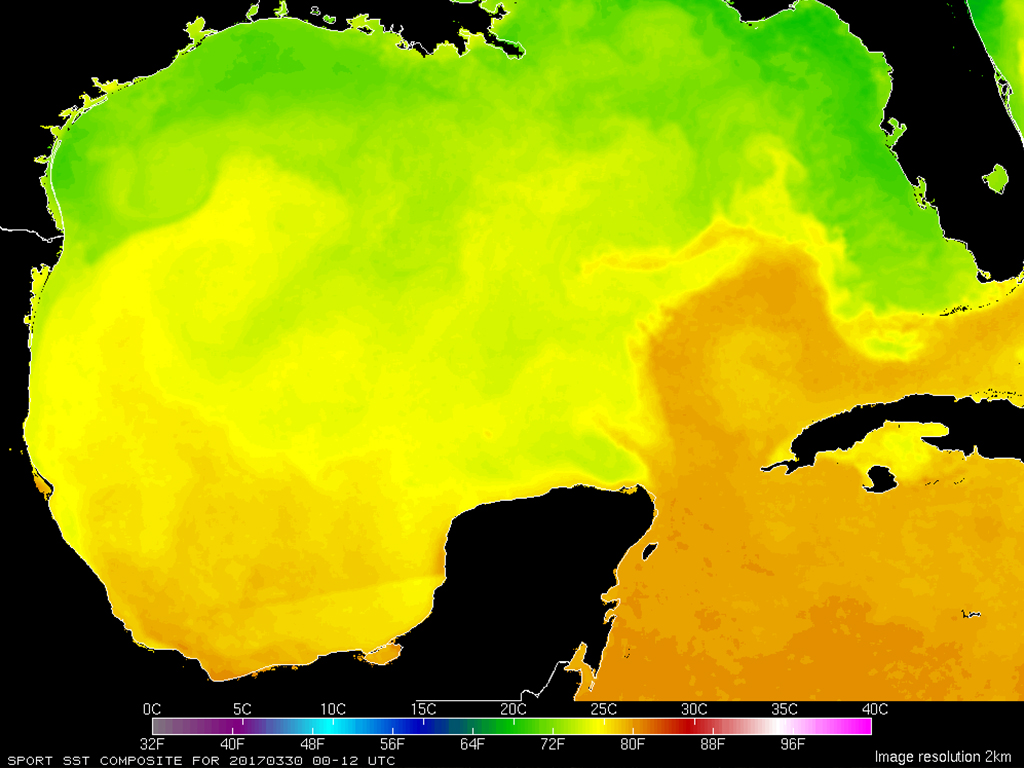Released: March 31, 2017
Warmer Gulf of Mexico temperatures bring rain
K-State climatologist says severe weather is on hold for now

MANHATTAN, Kan. – Unusually warm water temperatures in the Gulf of Mexico are fueling outbursts of severe weather and bringing much-needed rain to Kansas.
According to a recently published article in the technology journal Ars Technica, temperatures in the Gulf broke records for at least 31 days between November 1 and February 28. One contributing factor is the lack of cold air making its way south from Canada — instead, most of those winter blasts have been confined to the Dakotas and states along the northern U.S. border.
“Because of that, it's been much warmer than usual in the Gulf,” said Mary Knapp, a climatologist with K-State Research and Extension. “And that allows those surface waters — most of the waters in the Caribbean Basin or the Gulf of Mexico, really — to stay warmer than they would typically be at this time of the year.”
Historically, elevated temperatures in the Gulf have preceded intense spring storms. While that has been the case this week, it’s not really happened in Kansas.
“We’ve seen that in Louisiana, Alabama … and then up into the Appalachians, states like Kentucky and Tennessee,” said Knapp. “That flow of moisture is shifted about a state- to state-and-a-half east of us, and we're not seeing as much of that farther west. As a result, western Oklahoma, for example, continues to suffer from the same sort of drought situations that western Kansas is seeing.”
Knapp adds that for Kansas, this is still pretty early in our severe weather season. “May tends to be the biggest month as far as severe weather activity goes, and then it tends to taper off in June and July,” she said. “The reasons for that is that as you move into June and July, you're not getting the air mass contrast that you get in the spring months. You don't have that big, sharp gradient from warm temperatures to cold temperatures – that contrast which fuels the big events.”
The good news this week: Many parts of Kansas are enjoying good, steady rain. The rain is critical for the wheat crop, as well as the scorched earth from the recent wildfires. Moisture will help hold topsoil in place and encourage plant growth, according to a new K-State Research and Extension publication released this week.
Knapp said the delay in severe-weather incidents also offers a chance to prepare for the future.
“It's important that people have their emergency preparedness plan in place, so if they do have that severe thunderstorm warning or tornado warning, they'll know what to do and how to be safe.”
To assist citizens with disaster preparedness, K-State Research and Extension maintains a blog, Prepare Kansas. The Federal Emergency Management Agency (FEMA) also offers a guide to making a home emergency kit on its Ready.gov site.
-30-
K‑State Research and Extension is a short name for the Kansas State University Agricultural Experiment Station and Cooperative Extension Service, a program designed to generate and distribute useful knowledge for the well‑being of Kansans. Supported by county, state, federal and private funds, the program has county Extension offices, experiment fields, area Extension offices and regional research centers statewide. Its headquarters is on the K‑State campus in Manhattan.
Story by:
Randall Kowalik
rkowalik@ksu.edu
K-State Research and Extension
www.ksre.ksu.edu
For more information:
Mary Knapp
785-532-7019
